Robrecht Heyvaert on the WOII drama Wil

Based on the novel by Flemish author Jeroen Olyslaegers, Wil follows Wilfried Wils in his attempts to survive as an auxiliary policeman during the Nazi occupation of Antwerp.Heyvaert was awarded Best DOP at the 2024 Ensors for his work on the film.
Heyvaert attended film school at RITCS in Brussels. “I ended up there because I had no idea as a teenager what I wanted to do in life. Going to film school sounded like the least horrible option,” he admits. “During my film student years, I was a projectionist in small movie theatres, so I saw hundreds of movies. I saw them multiple times, one after the other. As you know, when you see a film more than once you start looking at it differently. Working as a projectionist taught me a lot and I’m really grateful to have had the chance to do that. It was all 35mm film back then, most modern movie theatres have transitioned to digital projection since then. As an audience member I like digital projection, but as a projectionist, I think it loses some of its craft. After my student years, I really knew that I wanted to do fiction film. I was less interested in documentaries and commercials. I started making short movies with fellow filmmakers, mostly young people. During that time, I met a lot of people and I gained experience little by little. I got more offers to work on semi-professional sets. That was about fifteen years ago and since then, I’ve had the opportunity to work on interesting projects. I’m very happy and I hope I can continue on that same wave.”
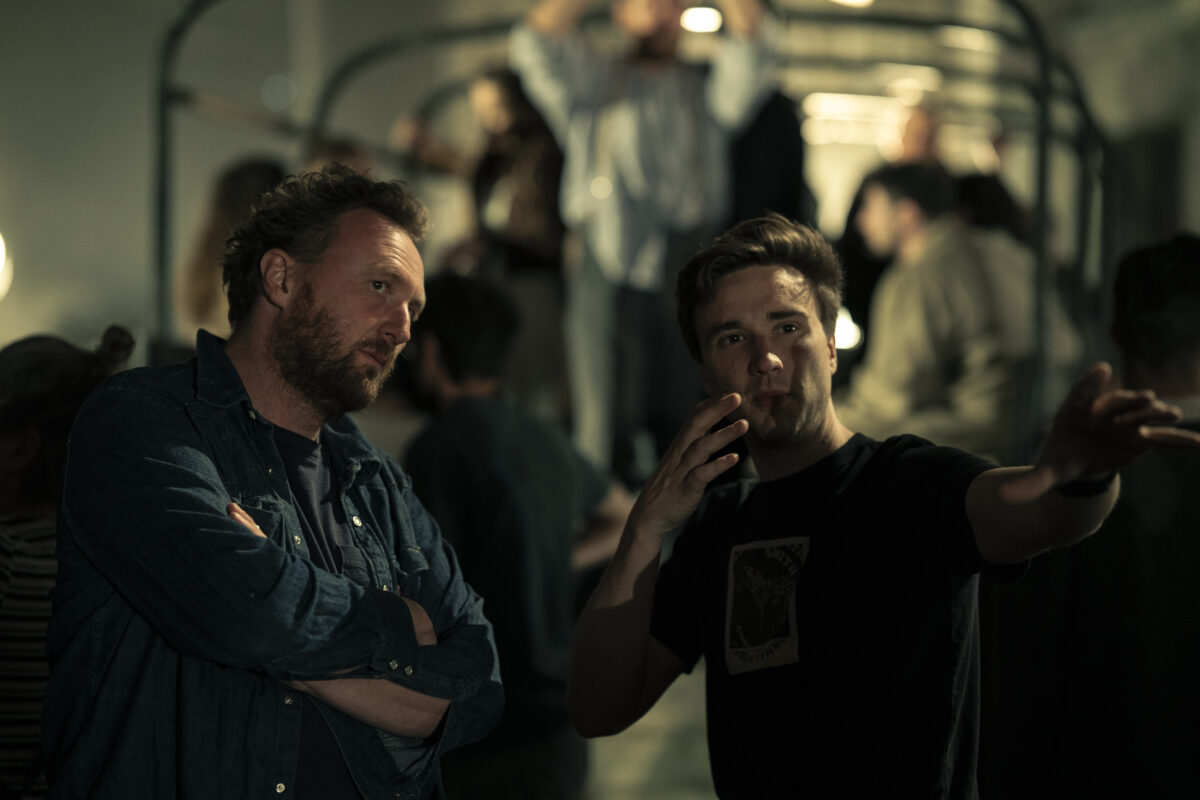
Heyvaert first met director Tim Mielants in Los Angeles, despite living only 20 minutes apart from one another in Belgium. “He was shooting in the US and I was also filming there for a pilot for TV series Snowfall. A few months before the shoot of Wil started Tim contacted me. At the time I was shooting in Antwerp, on a feature film called Zillion. Tim and I had dinner twice and were talking about the project. From our first conversations, I knew that the movie was a very interesting project and Tim a very interesting director, so I was really hoping that the project would come to fruition. A few days later Tim came to the set of Zillion declaring ‘Let’s do it!’. That’s how we got started,” explains Heyvaert.
When it came to initial conversations about the look of Wil, Heyvaert and Mielantsdecided that it would be quite impossible to form an objective image of a historical event like World War 2 in Antwerp set in 1942. “We all know that fiction film is a very subjective medium and in no way can ever achieve something that is truly historically correct, or objectively true,” says Heyvaert. “Tim and I never experienced the 40s, so we were thinking what is our imagery and our perception of that period. It is formed by photography and newsreels from those eras and by other fictional films obviously. We chose to be inspired by the historical photography, rather than the fiction films that we grew up with. That’s how we came up with certain lenses, colour palettes, the lensingand the aspect ratio. That goes hand in hand with the portrait photography that you see from those eras. Not only from the 40s, but also the 30s and even 20s. If you look at those portraits, they have a certain warmth to them and the edges of the frame tend to be less optically clear, so they have that radial blur and haze going on in the edges of the frame, which we thought was interesting and it could be used for our visual language to tell the story of Wil.”
The overall shoot consisted of around 50 shooting days. “I think two thirds of those are set in Belgium, so we travelled the entire country looking for historical buildings and a few alleys,” adds Heyvaert. “In the very early stages of the scouting process, we found out that getting real streets and boulevards that look like 1942 Antwerp, were impossible to find, or it would require a lot of clean-ups in post-production to remove modern signage, traffic lights and bike racks for example. For one third of the shoot and for most exterior scenes, we ended up in Poland where they have a few historical cities that architecturally look quite Belgian, which was surprising. I obviously haven’t lived in 40s Antwerp, but it really looked Antwerp-like and Belgian.”
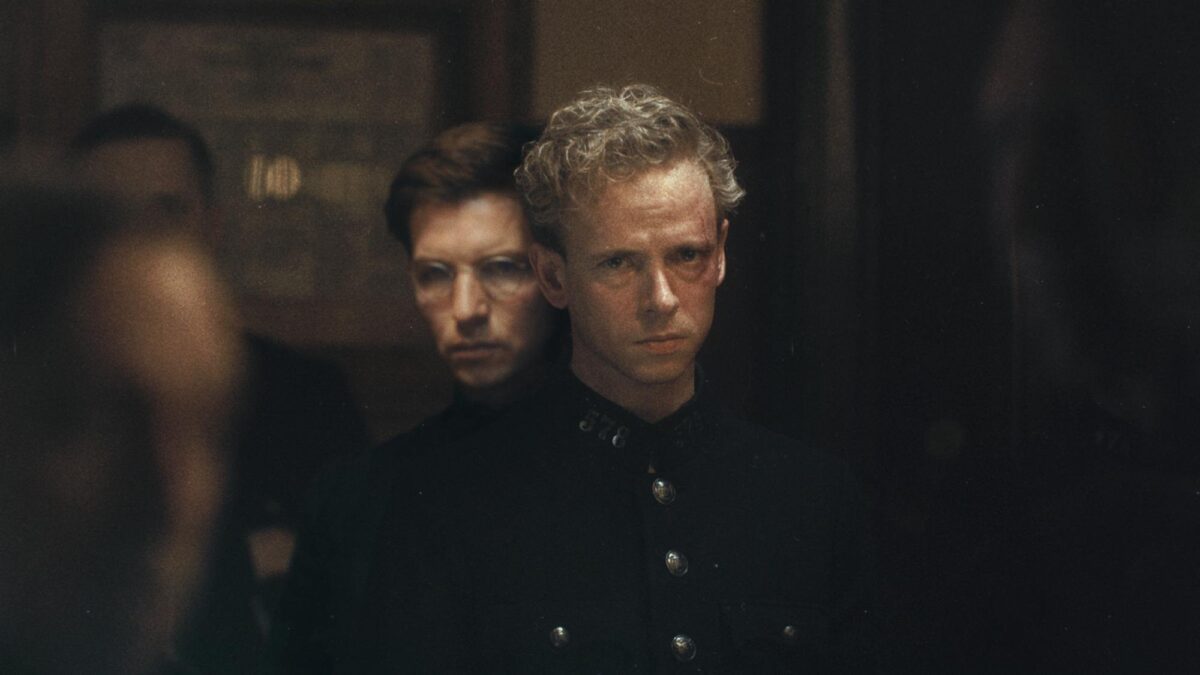
Heyvaert opted to shoot the film using the ARRI Alexa Mini LF. “That was important because early photography used larger film formats. The film sizes that were used in photography were actually way larger than the so-called large format of digital cameraslike an Alexa mini LF. Nevertheless, the digital cinema larger format helped to emulate the photography larger formats. We combined these cameras with photography lenses,” he explains. “The main ones used on the film were these Petzval lenses. Petzval is a designer of portrait lenses from the mid-1800s. A few years ago, a company called Lomography/Zenit remade these classic portrait lenses with the original design, but with glass produced by modern standards. The characteristics of the lenses are still there, but they’re optically updated. These characteristics like the falloff at the frame edges and the ‘cats eye’ or ‘rugby ball’ shaped bokehs become more prominent when using the lenses on a large format sensor. We had a 58mm and an 85mm which were rehoused by TLS, to put them in cinema friendly housing with a PL mount. 90% of Wil is shot with these two lenses. In some dialogue scenes we also used Slant focus lenses by Panavision, that can give you a tilt effect (as with tilt-shift rigs) in a compact housing that makes it more user friendly than a traditional tilt-shift setup. On a few occasions we used an Angenieux12:1 zoom to obtain very slow ‘creeping’ zoom shots.
Discussing his approach to lighting, Heyvaert reverts to the idea of not approaching it objectively, but rather subjectively. “That being said, I approached the movie not trying to be naturalistic, but rather impressionistic and surrealistic at some moments. Where the lensing and framing is inspired by photography, the lighting leans towards our take on motion pictures of the 30s, 40s and 50s. So, what that means is using big and heavy tungsten light sources and having thick smoke and heavy backlights to get that classic cinema rim light that we see in movies from that era. I’m used to seeing that in older movies. Since then, it has been used in other movies too, but it has gone away a little bit, especially in period pieces. It is worth mentioning that a lot of modern film lights don’t have those characteristics. For example, there is a really elevated scene in the beginning of the movie where the main character is forced to arrest a Jewish family. In this scene we wanted to use very hard shadows coming from the metalwork of an elevator shaft. Modern light fixtures don’t give you those hard shadows you think of when imagining 40s and 50s film noirs where you have those hard shadows on the walls and even on the characters. To obtain this, you have to go and look for those film lights that really give you that light quality. We ended up using tungsten fresnel lights of which we often opened the lens to give you even harder shadows. We also used Molebeamprojectors (5k and 10K), which are also heavy light sources that give you light shafts that you can really aim and they give you those hard shadows. I haven’t used them much in other projects. They steer a little bit away from the naturalism without taking the audience too much out of it. That was the crucial balance that we kept on looking for. It is subjective in many ways and the camera and the lighting paints its own place in the storytelling, without getting in the way of the story, the actors and the drama, but rather trying, or hoping to amplify it.”
Another essential part of the look of Wil is the color grading. After extensive testing in pre-production close collaborating colourist Tom Mulder created LUTs to emulate vintage film stock. The look was further developed at post house Storm, Amsterdam. In collaboration with Barco and Sondr an HDR version of Wil was created after the theatrical release.
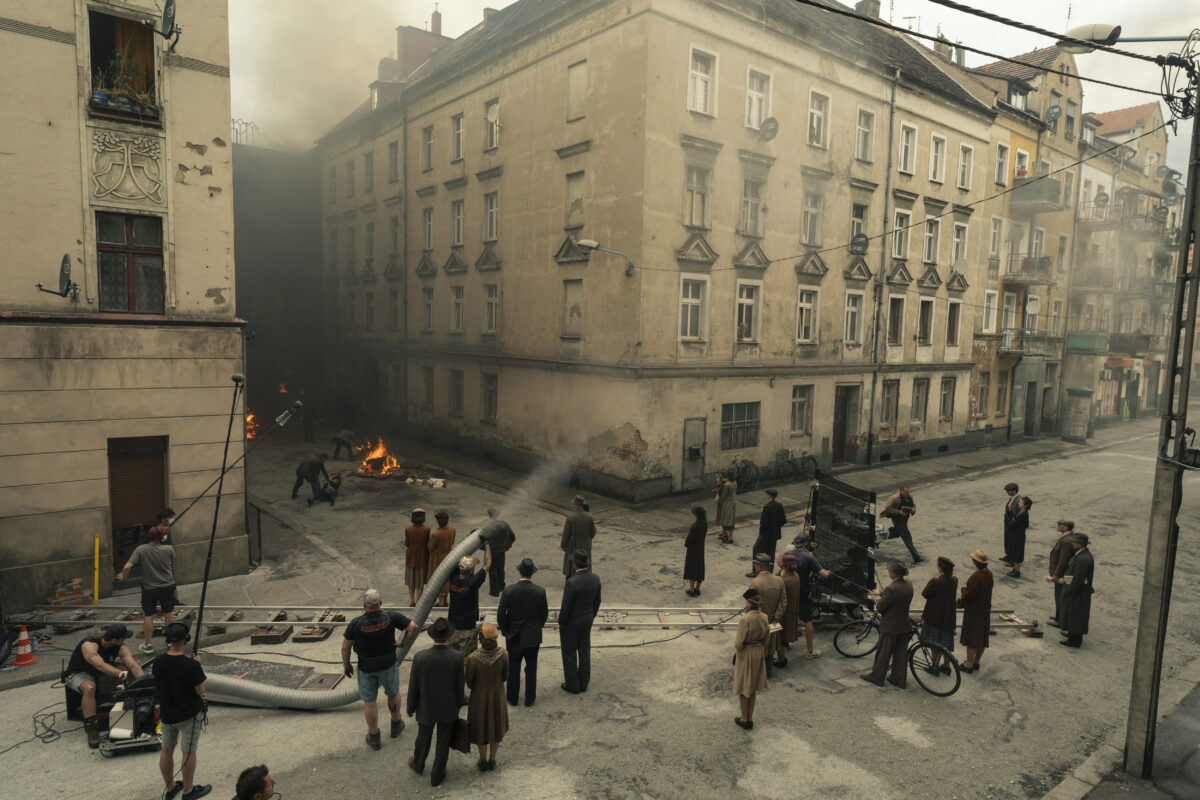
One particularly striking shot in the film follows Wil as he ascends the staircase in the police headquarters. “That brings me to another subject, which is the fact film cameras used to be super heavy and if you wanted to move them then you really needed a plan,” notes Heyvaert. “You need to put it on a track or on a crane. The way the camera moves in classic cinema makes you feel that the camera is heavy and therefore it becomes a part of the mise-en-scene of the scene. Why I’m saying this, is if you go with modern techniques and I think of Steadicam or gimbal cameras that are handheld and you can carry them around, it gives filmmakers a lot of liberty. I think that’s great, but we wanted to steer away from that in Wil. There are no Steadicam shots in the movie. There are multiple moments when you have a camera following the actors and it is always done on a dolly, on dolly tracks. In that particular shot where Wil enters the police headquarters, it is a very long track with some circular tracks that were built in that building. It took a lot of preparation and calculations to make those angles right because a piece of dolly track has a certain curvature, so it isn’t that easy to make every turn as you want. It really took some planning and rehearsal time with the actors to figure out how the camera would take those turns. It could have been done on Steadicam, but it wouldn’t have given the same feeling.”
“Also, since the movie is shot in 1,37:1 aspect ratio, you have to compose in a different way,” he adds. “I have been accustomed to working in a wider screen aspect ratio, so you put multiple characters side by side and you can see them all and that’s one of the big advantages of widescreen cinema. When you are working 1.37:1 you have more height or less width, depending on how you look at it. It allows for different composition with shots like the one in the staircase, where you have one character at the top of the frame and you have another one at the bottom of the frame and they really use the vertical alignment of the frame which is fun to work with and tells the story really well. You have the officer in the top of the frame having a good time teasing Wil and Wil is dragging his feet up the staircase at the bottom of the frame. He is being forced to work upwards towards the other channel.”
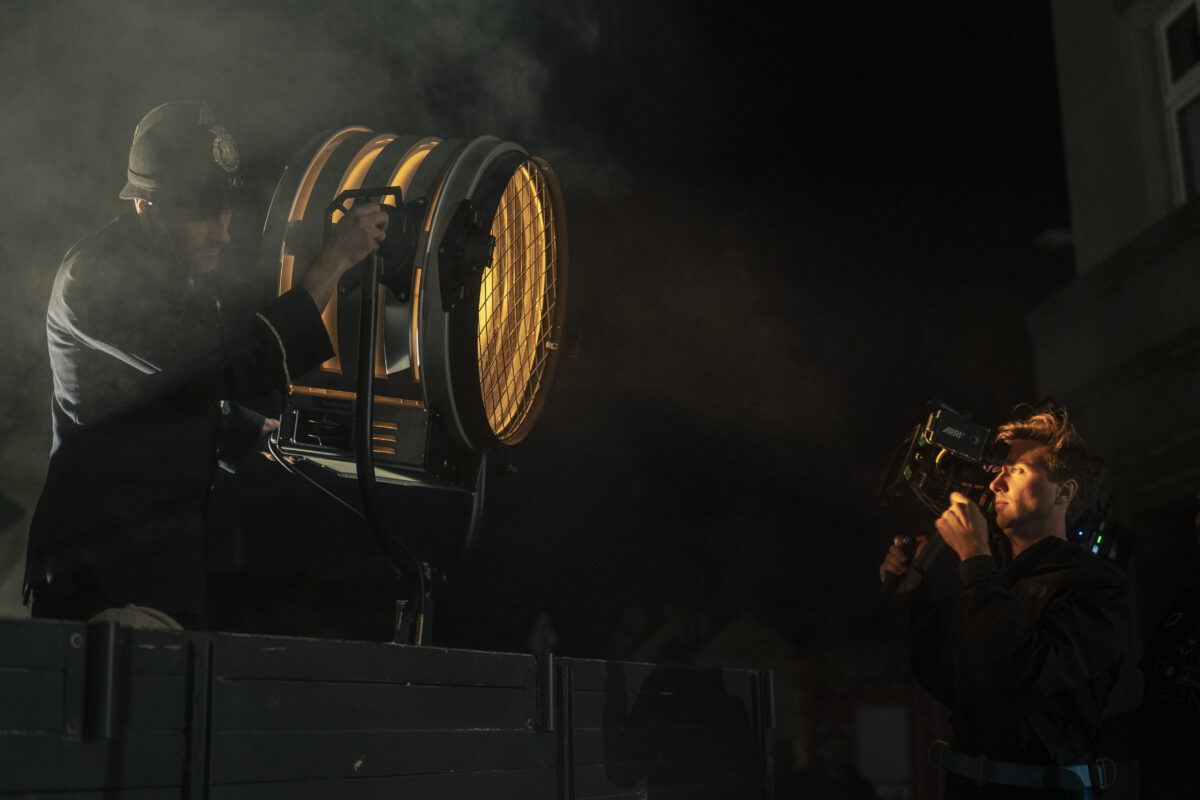
Heyvaert took a slightly different approach to capture the final razzia sequence. “Throughout the movie the director/camera is in control and has its own agenda and the camera dictates what the audience sees. When we reach the final act, we chose to let go of that approach little by little,” details Heyvaert. “With a few transition pieces, we end up in a handheld sequence in the final razzia, where I’m operating a handheld shoulder camera and walking through it. We thought by relying less on editorial cuts, we wanted to capture it as much as possible in one continual energy because it allows the audience to be more invested and see it all with his or her own eyes and scan the frame and scenery, feel the energy, instead of filmmakers or editors deciding what to see and when in the edit. However, if you do that and approach these longer shots with a handheld camera, it is the camera and the blocking deciding what you see, when and how. So, it is a very interesting choreography with actors and stunt people, lots of extras and with cameras and lights to try to show you what we need to see without showing too much.”
“On both ends of the street were these big military trucks with searchlights on them,” continues Heyvaert. “These were used on these razzia’s mainly as a light source obviously, but also as psychological warfare because it is scary and you can point it right in somebody’s face. If you look at a big, bright light shining in your eye, people might put up less of a fight and be more obedient. Those searchlights also played a pivotal role because I remember that at certain moments, we are on one character and we barely see them. We had people operating those light beams and hit the actor at a certain moment so we could capture his expression at that specific moment and half a second later it’s already gone and it flares the lens. Those moving lights made it extra challenging because they become part of the choreography, which is not often the case in action sequences. It was also very interesting because it gives you extra tools to make the choreography more effective. In practical terms, I think it took us a half rehearsal day and then I think a day or two later we shot a full night’s worth to get it entirely right. Step by step and getting all the ingredients together and in sync takes some time. The final result we wanted was to make it look like it’s not staged and make it look accidental or coincidental. That was the challenge and as a filmmaker I think it is very interesting, but at the same time it is demanding too because you are setting up a very violent, dramatic and horrifying scene.”
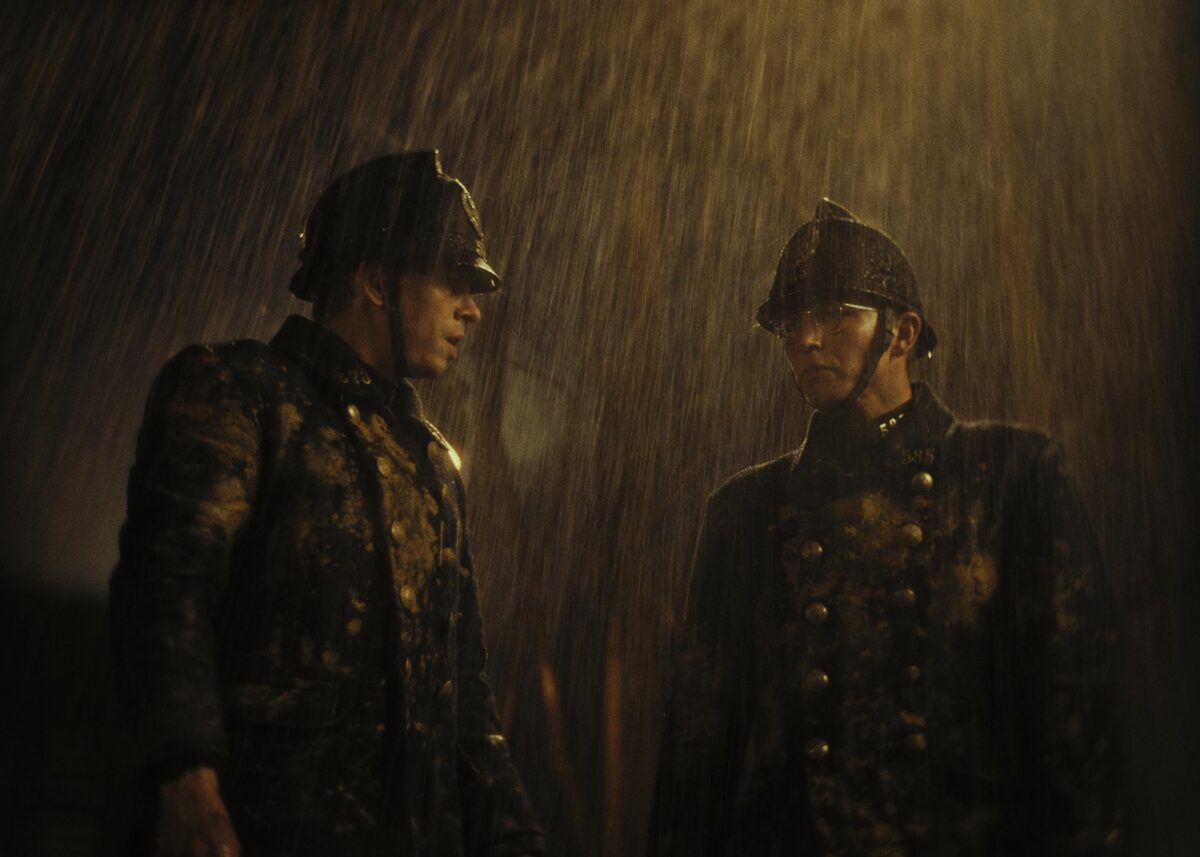
“What I really like about the film is that it has a real directing eye. To me, the strength of the movie is the choice that Tim made to show what, when and how, which is honestly what directing is all about. It is rare that it is so full on and so well executed and so boldly displayed and I think that was a really good achievement. As a cinematographer, it is very pleasant to work with a director who makes those choices in that way and it was rewarding to work on it. When I say that it doesn’t mean that every film I see or work on should be made in the same way. I think it’s good that every director on every different project has the opportunity to decide how to film the movie and to narrate the story to the audience. Here it was very pleasant to see how Tim wanted to tell the narrative and for me to be a part of it and being able to help him with that,” concludes Heyvaert.
Pics by Charlie De Keersmaecker and Krzysztof Wiktor.
by Oliver Webb.
